On the headwaters of the Klamath River, water shortages test tribes, farmers and wildlife
CHILOQUIN, Ore. — Don Gentry stood under a pine tree on a late summer day overlooking the confluence of the Williamson River and Spring Creek.
"We're at the headwaters of the Klamath River, the spring creek that flows out of the ground up there," said Gentry, pointing at the burbling waters that feed Upper Klamath Lake and eventually, the Klamath River.
Gentry is the former chairman of the Klamath Tribes, who have been working to reclaim their reservation lands and waters in the Upper Klamath River Basin. They're also trying to preserve the two fish species at the heart of their cultures.
The Klamath Tribes, the only tribe on the river holding a ratified treaty with the U.S., has a long relationship with Upper Klamath Lake and the Upper Klamath Basin. They own the most senior water rights in southern Oregon, and they're not afraid to use those rights to address their issues with fish in their traditional lands. That has put them at odds with farmers who also rely on the river to grow potatoes, onions and other crops after the U.S. government invited them to homestead in the now-drained Lower Klamath and Tule lakes.
The three cultures of the Klamath Tribes — the Klamath, Modoc and Yahooskin Paiute — have inhabited southern Oregon, the Tule, Upper Klamath and Clear lakes and the lands around what is now Lava Rocks National Monument for millennia. Gentry said anthropologists confirm they have lived and worked in the basin for at least 15,000 years.
In 1864, the Klamath ceded 23 million acres to the U.S., receiving a 1.8-million acre reservation in southern Oregon. They retained the right to hunt, fish and gather plants.
The tribe enjoyed prosperity, thanks to its logging and cattle operations. Tribal members also continued to hunt and fish for salmon, steelhead and the fish they are culturally affiliated with: the c'waam, or Lost River sucker and the koptu, or shortnose sucker. Those fish once inhabited both Upper and Lower Klamath lakes and the Lost River watershed.
The c'waam is at the center of Klamath culture, according to Klamath Tribes Chairman Clayton Dumont.
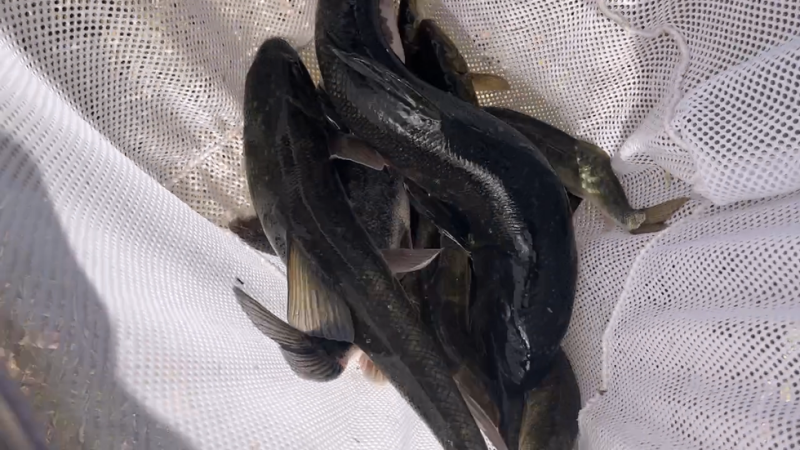
"Gmok’am’c, the Creator, chopped up a serpent who tormented the people," Dumont said. "He changed the pieces into the c'waam and told the people to care for the fish and the fish would take care of them." The tribe has worked to care for those fish ever since.
With their prosperity, the tribe confronted ancient ethics regarding how they used the land's bounty.
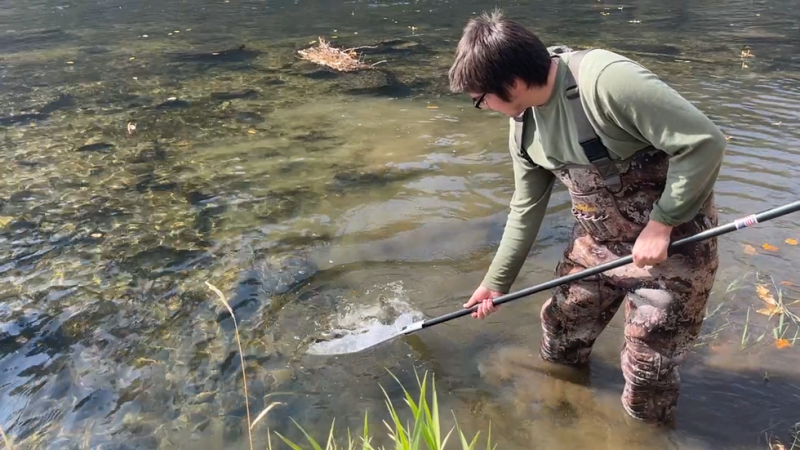
"We're not preservationists; we use things," Gentry said. But the land's blessings come with responsibilities. "As humans, we have a real responsibility to only take what we need," he said. For example, "We would gather duck and goose eggs but we wouldn't take them all." Those ethics and morals have survived colonization.
But the massive system of lakes, marshes, rivers and streams once known as the “Everglades of the West” that had sustained fish, birds, other wildlife and Native peoples would be altered to suit settler priorities.
Massive 'Klamath Project' leaves little for birds or fish
Beginning in 1905, the federal government embarked on the Klamath Project, which replumbed much of the Upper Basin. The results have reverberated across the entire basin.
The Bureau of Reclamation began draining Lower Klamath and Tule lakes to deliver farmlands to homesteaders. A railroad embankment separated the Klamath from the Lower Klamath Lake. Diversion dams dried up Tule Lake, freeing the nutrient-rich soil. The bureau built the "A" canal to deliver irrigation water to what eventually grew to about 240,000 acres of alfalfa, grass seed, potatoes and other crops. Dams, canals, diversions, pumping plants and other infrastructure followed.
Tule Lake is now completely dry and Lower Klamath Lake is nearly so, disconnected from the ancient Klamath River Basin watershed.
While one branch of government busily drained lakes and wetlands that wildlife and Native peoples depended on, and which had stored water for millennia, another branch worked to preserve the little that was left.
President Theodore Roosevelt created the Lower Klamath National Wildlife Refuge in 1908, the nation's first waterfowl refuge. In 1928, President Calvin Coolidge established Tule Lake National Wildlife Refuge. The refuges are part of a complex in the region managed by the U.S. Fish and Wildlife Service, which also administers the Endangered Species Act.
Upriver from the Upper Klamath Lake, the Sprague River, one of the lake's major sources, was channelized by the Army Corps of Engineers to dry out wetlands and create cattle pastures. Cattle were allowed to roam in the waterway, fouling the waters.
There were other consequences: The soil in the Upper Basin contains significant levels of phosphorus, which was once filtered by wetlands upriver from the lake. The combination of contaminants from cattle droppings and the basin's naturally occurring phosphorus that turbocharges algae growth, combined with agricultural runoff into the 25-mile-long lake, creates often deadly conditions for fish and hazardous conditions for humans and other species.
After troubled times, Klamath Tribes move to reclaim heritage, lands and fish
The coming of intensive agriculture and water diversions took a toll on the lake's aquatic life. C'waam and koptu declined greatly and were listed as endangered in 1988. Salmon, steelhead or lamphrey could no longer access about 400 miles of their cold-water spawning sites after a series of dams were built on the middle Klamath River, structures that contribute to the low fish numbers.
The c'waam and koptu are indicators of ecosystem health throughout the basin, said Mark Hereford with the Oregon Department of Fish and Wildlife. "The decline of the fish is an indicator of the decline of the lake system."
In 1954, Congress terminated the Klamath Tribes’ sovereign nation status, a ruinous blow to a once-prosperous people. It left the tribe without a land base, since the reservation had been put into private land status and allotted to individual tribal members.
Termination also devastated the tribe's community structures. "Termination brought about some social problems," Gentry said. Men's roles as providers and protectors was threatened, and even the use of traditional plants was shunned as "witchcraft" due to the prohibitions against Native religious practices.
In 1974, the 9th U.S. Circuit Court of Appeals ruled the Klamath Tribes had retained their treaty rights even though Congress had terminated their sovereignty, and the tribe regained its sovereign status in 1986. By that time, their reservation was fragmented into allotments that some tribal members managed to retain. The Klamath Tribes now have just 309 acres of noncontiguous trust land and about 2,800 acres of private land.
The tribes' senior water rights were quantified in 2012, and reaffirmed several times, most recently in June 2023.
Dumont said the 5,600-member tribe is committed to restoring its 1864 land boundaries along with its cultural heritage. But the tribe is in it for the long haul, he said, even though they face serious challenges.
"There's not enough money on the planet to compensate for what's happened here."
They must also confront challenges in maintaining water quality to preserve the c'waam and koptu. The tribe has created its own nursery for the fish, Ambodat, or "about or near the water."
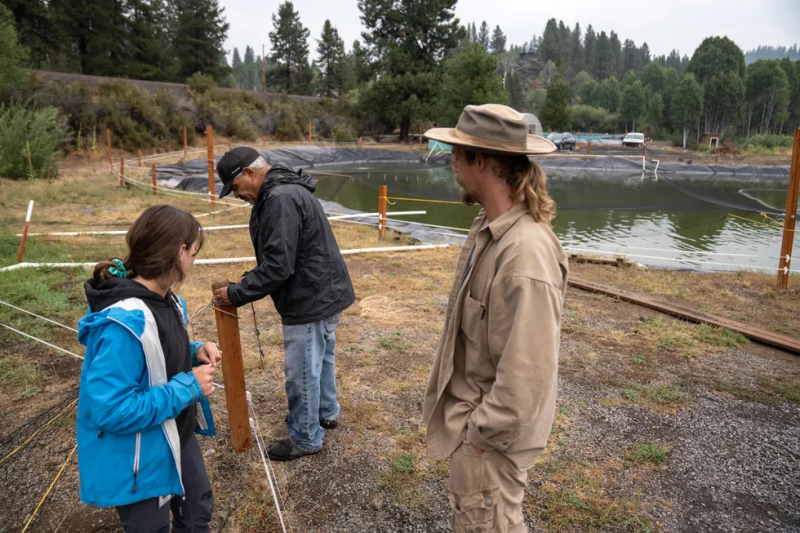
And the tribe is restoring the lands it has purchased. One project is the Hog Creek Ranch, located on a tributary of the Williamson River. The tribe is using American Rescue Act funds to restore the 1,256-acre marshy wetland that had been drained to use as a cattle ranch. They hope the restoration will also recreate critical habitat for the Oregon spotted frog and other semi-aquatic species.
The tribe is also dealing with a decline in forest health. As in other parts of the West, fire suppression and drought, fueled by climate change, have resulted in gigantic wildfires that damage plant, animal and aquatic life. The Bootleg Fire in 2021 burned 413,000 acres, including lands surrounding Upper Klamath Lake's tributaries, and damaged elk wintering areas.
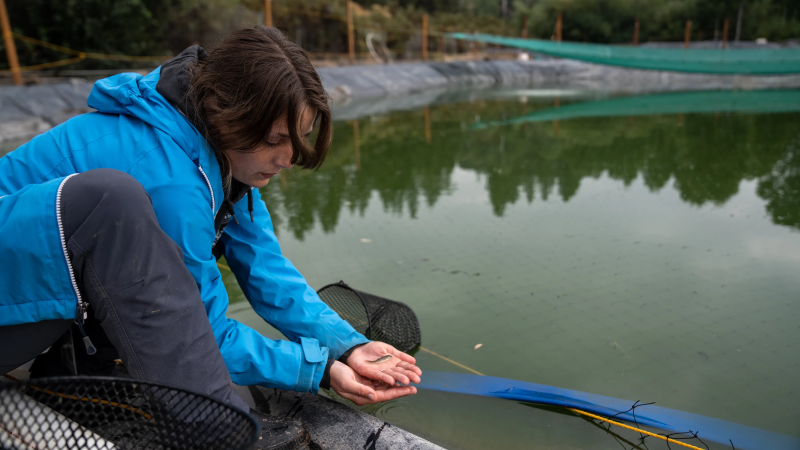
Farmers say they're in 'survival mode'
The Klamath Tribes' use of its senior water rights to force the Bureau of Reclamation to keep water in the lake and preserve their fish hasn't sat well with other water users, such as farmers downstream in the Tulelake, Klamath and other irrigation districts and irrigators in the Upper Basin. They saw their supplies curtailed in 2001 and have dealt with uncertain supplies ever since.
"We've been in survival mode for 20 years," said Scott Seus, a farmer from Tulelake. "Other parties sit in the driver's seat."
Seus and other farmers in the area said they felt they lost their negotiating leverage after the Klamath Basin Restoration Agreement failed to obtain congressional support. The farmers had supported dam removal as part of the agreement.
Seus pointed out several abandoned potato processing facilities and fallow fields. Even if a farmer wanted to sell out, the lack of reliable water supplies means that the land is worth far less than if the water were available. Also, he said, allowing fields to remain fallow too long allows weeds and invasive plants, degrading their value even more.
In 2018, the Klamath Project Drought Response Agency was formed to maximize water for irrigation water users in the Klamath Project. The agency provides conservation programs and financial assistance to farmers who agree to idle fields. The money comes from an intergovernmental agreement with the Bureau of Reclamation. It's helped the situation, but the farmers who spoke with The Arizona Republic, part of the USA TODAY Network, said what they really needed was sufficient water to grow crops and support their families.
Birds land at the bottom of the water chain
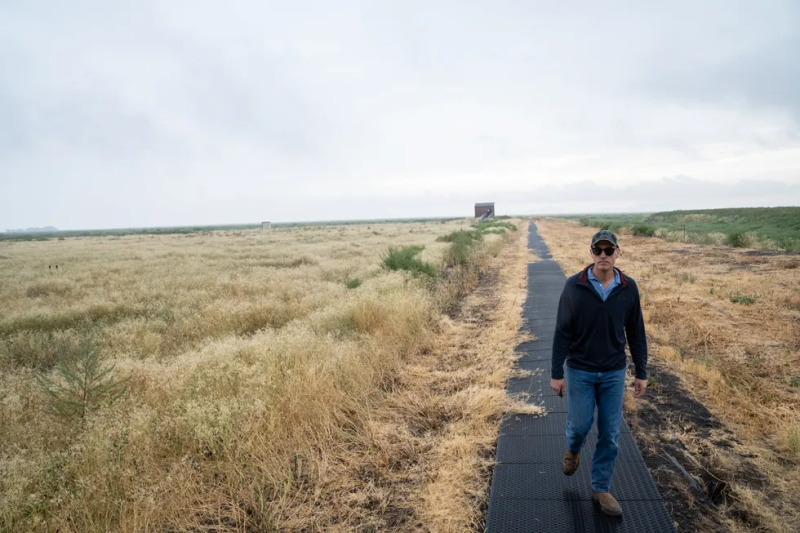
Ryan Sabalow's voice broke when he talked about the times he and his dad enjoyed duck hunting in the Lower Klamath National Wildlife Refuge. Sabalow, communications coordinator for Ducks Unlimited, spoke of a time when they could go from duck blind to duck blind in the lush wetlands of the 50,000-acre refuge, part of a six-parcel complex on the Pacific Flyway. But this year's season was halted due to a shortage of birds making their way to the once-abundant fields of grasses, marshlands and other avian habitat.
In its heyday, the refuge and its companions gave about 5.8 million birds respite from their long migrations as well as breeding and molting sites. More recently, the U.S. Fish and Wildlife Service, which manages the refuges, reported about 1.8 million birds visit the lands during the course of a year.
Ducks, shorebirds, bald eagles, herons, egrets and dozens of other bird species depend on these and other refuges along the flyway.
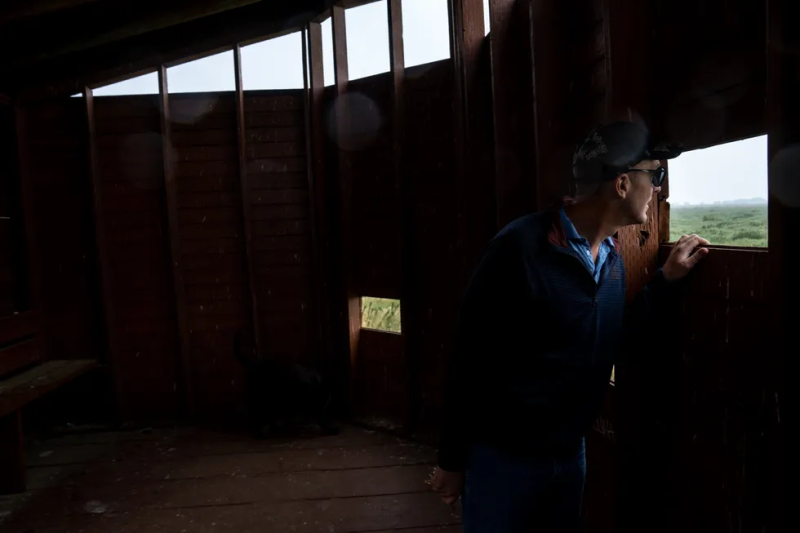
"There's not enough water to go around," Interior Secretary Deb Haaland admitted in April about the Klamath River Basin. Nowhere is this shortfall more apparent than in the wildlife refuges.
The refuges are all that are left of two huge natural lakes that were drained early last century. In 1908, President Theodore Roosevelt set aside the 50,913-acre Lower Klamath National Wildlife Refuge as the nation’s first federal waterfowl refuge. Founded in 1928 by President Calvin Coolidge, Tule Lake National Wildlife Refuge is 39,116 acres.
The refuges are fed by agricultural runoff delivered by a 6,600-foot long tunnel under Sheepy Ridge, which juts above the lakebeds, and by a canal from the Klamath River. But when the Klamath Tribes make a water call to preserve c'waam and koptu in the Upper Klamath Lake or drought lays the Klamath low, little or no water flows to refresh the reeds, grasses and the water the birds need. That's because the government never secured reliable water rights for the refuges.
At the top of Sheepy Ridge, Seus and other local farmers offered a birds-eye view of how the desert has encroached on the once-lush marshlands.
The wetlands also once harbored c'waam and koptu as well as other fish. No longer.
The situation became so dire that in 2021, the California Waterfowl Association started the process of purchasing water rights to convey to the Lower Klamath refuge. The 3,750-acre-feet of water floods 1,200 acres.
Although this falls far short of the 100,000 acre-foot requirement the refuge needs to maintain bird habitat, Mark Hennelly, vice president of advocacy for the group, said they see it as a long-term solution to provide water to at least part of the refuges.
"The Klamath Project was meant to provide water for farming," he said. "They didn't consider the refuges' needs because at the time there was water for everybody." The organization hopes to secure funding and eventually obtain up to 30,000 acre-feet of water rights, which would supply 10,000 acres within the refuge.
Ducks Unlimited also stepped in to help. The organization installed a pumping station at the Lower Klamath refuge to deliver irrigation return water made available by the California waterfowl group, a local drainage district and the Fish and Wildlife Service. Four more pumps are planned, two each in the Lower Klamath and Tule Lake refuges.
But these weren't enough to wet more than a small portion of the refuges. Both refuges canceled the duck hunting season last year and Lower Klamath's 2024 hunting season has been canceled.
'Walking wetlands' may be part of the solution to restoring wildlife refuges
Marc Staunton pointed out a field within the Lower Klamath refuge. But instead of nettles, thistles and other noxious plants, this field held marshy grasses and water.
"Back in 2005, we started working on a project to develop natural lands and have farming go on at the same time," he said.
The project Staunton referred to was the “Walking Wetlands” program, developed by Fish and Wildlife in the 1990s. Farmers agree to put water on a plot of leased land within the refuge for a one- to four-year cycle. They plant crops as usual, but without using pesticides. This saves the growers up $200 an acre in pesticides while increasing crop yields up to 25%. It also enables the farmer to certify the crop as organic, which increases their revenues, and farmers get a break on their leases.
Staunton started the project on 500 acres of his farmland.
"It's been super successful," he said. Not only does he make more money with the organic crops, the wetlands attract birds. They even noticed some koptu living in the wetland area. "The suckers survived in the old farms until they totally drained the lake," Staunton said.
The only thing Walking Wetlands needs is more water to make it work, he said. If not he said, "you're forsaking the birds."
Reclamation attempts to bring people together for solutions
Matt Strickler, deputy secretary for fish and wildlife at the Interior Department, is also serving as lead person for Klamath Basin water issues. Interior deals with most of the stakeholders and the issues, including six tribes, the refuge complex, the National Park Service, U.S. Fish and Wildlife Service, the National Oceanic and Atmospheric Administration and Reclamation as water manager for the Klamath Project.
“Would we have done it this way before?” Strickler asked, referring to the current state of conflicting claims and projects which he acknowledged has created a socially and ecologically degraded system.
His answer: “No.”
But the Biden administration aims to do a better job in managing the basin. Stricker told The Republic that Interior started a new effort in 2022 to bring together people who live and work in the Klamath Basin and help them access resources to address the basin's challenges. The COVID-19 pandemic prevented in-person meetings before then, he said.
The administration now has the money to foster agreements but lack any for now. Still, he said, “People forgot that they don’t hate each other.”
Tribal, local, state and federal partners have asked to meet with the Bureau of Reclamation to provide their opinions on water management and environmental decisions.
The meetings, including one held in nearby Ashland in September, are an opportunity for stakeholders to claim a consistent seat at the table, improve transparency and work with each other and the bureau, he said.
Strickler acknowledged that the refuges have junior water rights under water laws. That, he said, makes it critical to work with all the stakeholders on restoration work that has broad support.
He's optimistic because the parties seem to agree on the need for environmental restoration. "It promises to have multiple benefits for nature and communities," he said.
Modocs come home, at last
Restoring the Klamath comes at an important moment for one tribal community. The Modoc Nation, banished to "Indian Country," now known as Oklahoma in 1873, is reclaiming part of their homeland.
The tribe was formed from descendants of the followers of Captain Jack, a Modoc member of the Klamath Tribes. Jack rebelled against corrupt Indian agents and clashes with the Klamath people and took his band back to Tule Lake and what's now Lava Beds National Monument, which sparked the Modoc War. After Jack and three of his lieutenants were hanged at the war's end, his followers were sent away.
But the nearly 500-member tribe never forgot its origins and has been buying up land within its ancestral boundaries. The most recent purchase was a worn-out sheep ranch near Sheepy Ridge. The nation plans to restore the ranch and two other pieces of land to the condition they were in when Modoc people first set foot in the remote region of northern California and southern Oregon millennia ago.
Ken Sandusky, the nation's resource and development director, said the purchases are part of a larger investment to reconnect the Modoc people to their homelands. They will restore sage grouse habitat, bring bison to the ranch and hold more cultural events, such as a recent ancestral run.
"Our biggest priority is restoration, sustainable economy and jobs," said Sandusky, a longtime Klamath Falls resident who's a member of the Choctaw Nation of Oklahoma. "This land hasn't had Indian representation in a long time."
Debra Krol reports on Indigenous communities at the confluence of climate, culture and commerce in Arizona and the Intermountain West. Reach Krol at debra.krol@azcentral.com. Follow her on X, formerly Twitter@debkrol.
Coverage of Indigenous issues at the intersection of climate, culture and commerce is supported by the Catena Foundation.
Disclaimer: The copyright of this article belongs to the original author. Reposting this article is solely for the purpose of information dissemination and does not constitute any investment advice. If there is any infringement, please contact us immediately. We will make corrections or deletions as necessary. Thank you.







